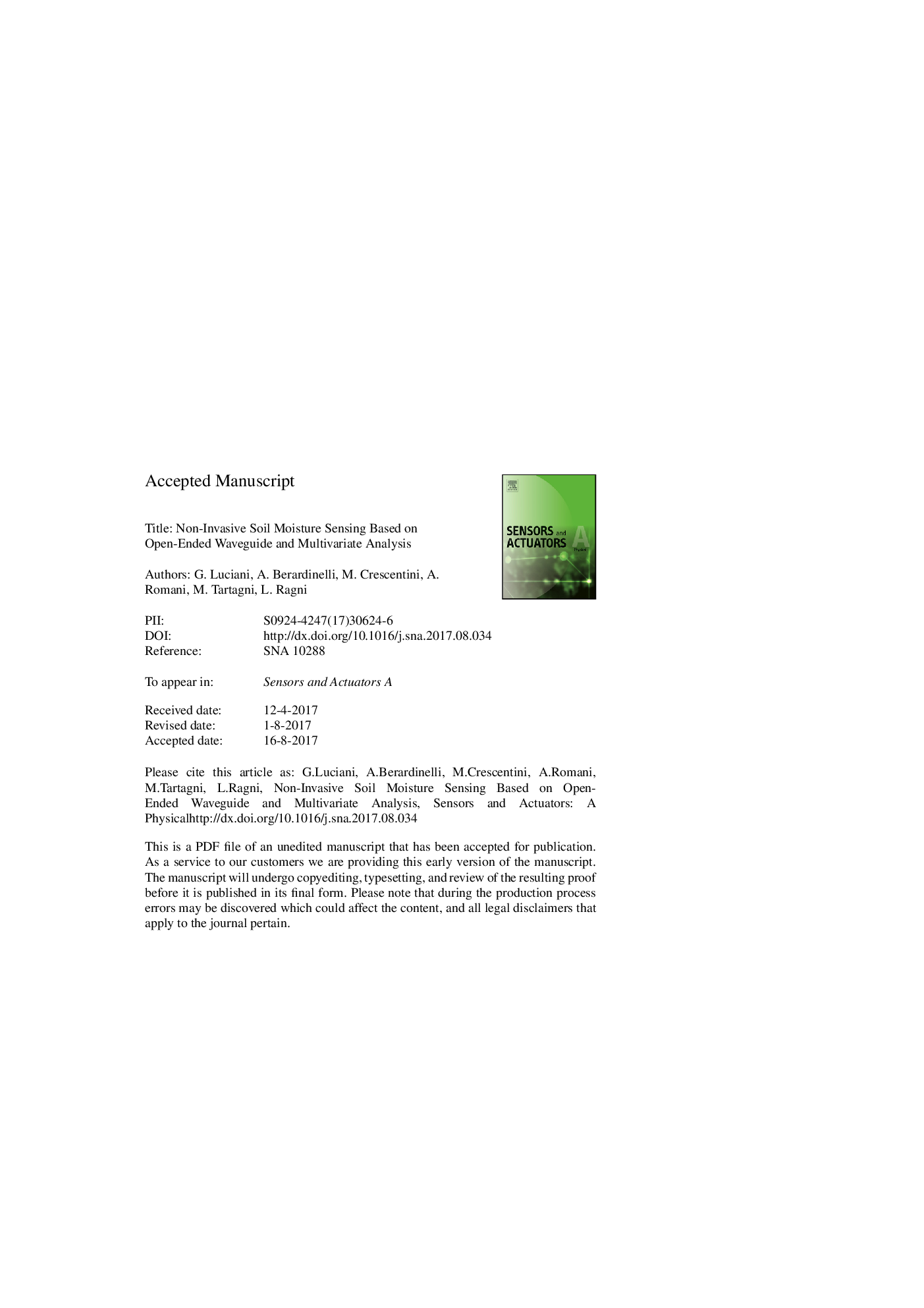| Article ID | Journal | Published Year | Pages | File Type |
|---|---|---|---|---|
| 5008218 | Sensors and Actuators A: Physical | 2017 | 28 Pages |
Abstract
In this paper, we demonstrate the effectiveness of multivariate analysis to increase the performance and reliability of a novel method for a non-invasive sensing approach for measuring gravimetric soil moisture. Unlike time and frequency domain spectrometers, as well as impedance sensors, where probes should be inserted into the terrain, the proposed approach simply uses a waveguide faced to the soil surface. An open-ended waveguide spectrometer system was developed to acquire “gain” and “phase” spectra, related to received and transmitted signals, in the 1.5-2.7Â GHz range from river sand, lightweight expanded clay aggregate (LECA) and silty clay loam soil samples. For each soil type, predictive models of the moisture (%) were obtained and discussed by using multivariate tools (Principal Component Analysis, Partial Least Square Regression and N-dimensional Partial Least Square Regression). The potentiality of the measurement technique was explored for both non-layered (homogeneous moisture) and layered (two layers with different, homogeneous moisture) soils. In validation tests, R2 values up to 0.989 (RMSEÂ =Â 0.8%, river sand gain) were observed for single layer test. For double layer test, R2 values up to 0.977 (RMSEÂ =Â 1.4%, LECA gain, top layer) and 0.962 (RMSEÂ =Â 1.9%, LECA gain, bottom layer) were obtained. A better accuracy was achieved with N-PLS combining “gain” and “phase” spectra: R2 values increase up to 0.991 (RMSEÂ =Â 0.9%, LECA samples). The measurement results demonstrate that the non-invasive waveguide-based spectrometry together with the multivariate analysis is able to assess different moisture contents, with a high level of accuracy, both for non-layered and layered samples of soil with homogenous moisture.
Keywords
Related Topics
Physical Sciences and Engineering
Chemistry
Electrochemistry
Authors
G. Luciani, A. Berardinelli, M. Crescentini, A. Romani, M. Tartagni, L. Ragni,
